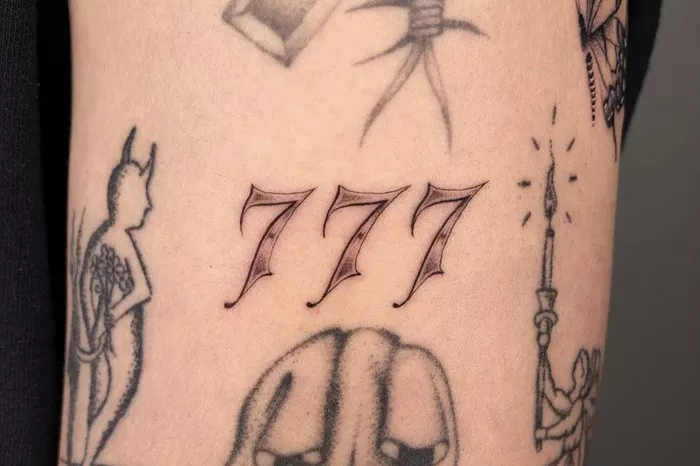Tattoos have evolved from cultural symbols to mainstream art forms, with a diverse range of designs adorning bodies worldwide. Behind each inked masterpiece lies a process that begins with a sketch. However, the question arises: do tattoo artists charge for sketches? This inquiry delves into the practices within the tattoo industry, shedding light on the factors influencing whether clients should expect to pay for these preliminary designs.
The Creative Process: From Concept to Skin
Before a tattoo becomes a permanent fixture on someone’s skin, it starts as an idea. Clients bring their concepts, references, and personal stories to tattoo artists, initiating a collaborative creative journey. The artist’s role encompasses not only technical proficiency but also the ability to translate abstract ideas into tangible designs that resonate with the client’s vision.
Sketching marks the initial phase of this process. It serves as a visual blueprint, allowing both the artist and the client to conceptualize the final tattoo. During the sketching stage, artists explore various compositions, styles, and elements to ensure alignment with the client’s preferences. This iterative process often involves feedback and revisions until the design achieves mutual satisfaction.
The Value of Tattoo Sketches: Artistic Expertise and Time Investment
Tattoo sketches are more than mere doodles; they represent the culmination of artistic expertise and creative labor. Crafting a bespoke design requires not only technical skill but also artistic flair, as artists strive to capture the essence of the client’s vision while infusing their unique style.
Moreover, sketching demands time and effort. Artists devote hours to brainstorming, sketching, refining, and revising designs to perfection. Each iteration reflects a commitment to excellence and a dedication to delivering a tattoo that exceeds the client’s expectations. Consequently, the value attributed to these sketches extends beyond the physical medium to encompass the artistic process and the artist’s expertise.
Industry Practices: Varied Approaches to Charging for Sketches
In the realm of tattooing, practices regarding sketch fees vary widely among artists and studios. While some artists include sketching as part of their overall service and pricing structure, others opt to charge separate fees for this preliminary stage. Understanding the rationale behind these differing approaches can provide insight into the industry dynamics.
Factors Influencing Sketch Fees: Complexity, Customization, and Artist Reputation
Several factors influence whether tattoo artists charge for sketches and the corresponding fees:
1. Complexity of the Design: Elaborate, intricate designs require more time and effort to conceptualize and execute. Artists may factor the complexity of the design into their pricing, especially if it involves detailed linework, shading, or intricate motifs.
2. Customization and Personalization: Clients seeking custom tattoos expect designs tailored to their unique preferences, experiences, and identities. Customization entails a collaborative process between the artist and the client, often involving multiple iterations and revisions. Consequently, artists may charge for sketches to compensate for the personalized attention and creative input invested in crafting bespoke designs.
3. Artist Reputation and Demand: Established tattoo artists with a strong reputation and high demand for their work may command premium prices for their services, including sketches. Clients value the expertise, creativity, and prestige associated with renowned artists, making them more willing to pay for the privilege of collaborating with industry leaders.
4. Studio Policies and Business Models: Tattoo studios may adopt different business models and pricing structures based on their operational needs and market positioning. Some studios include sketching as part of their overall service package, while others treat it as an optional add-on or a separate service with associated fees. Studio policies regarding sketch charges reflect a balance between covering operational costs, compensating artists fairly, and providing value to clients.
Transparent Communication: Clarifying Expectations and Costs
Clarity and transparency are essential pillars of a positive client-artist relationship. To avoid misunderstandings and ensure mutual satisfaction, it’s crucial for artists to communicate their policies regarding sketch fees upfront. By outlining their pricing structure, including any charges for sketches, artists empower clients to make informed decisions and appreciate the value proposition offered.
Likewise, clients should articulate their expectations regarding the tattoo design process, including their willingness to pay for sketches and their budget constraints. Open dialogue fosters trust and collaboration, paving the way for a rewarding creative experience for both parties.
Negotiation and Flexibility: Finding Common Ground
In cases where clients express reluctance to pay for sketches or have budget constraints, artists may exercise flexibility and explore alternative arrangements. Negotiation can involve adjusting the scope or complexity of the design to align with the client’s budget while maintaining artistic integrity.
Furthermore, artists may offer flexible payment options, such as installment plans or package deals that bundle sketching fees with the overall tattoo cost. These proactive measures demonstrate a commitment to accommodating clients’ needs while upholding professional standards and artistic integrity.
Conclusion
Tattoo sketches represent the intersection of creativity, collaboration, and craftsmanship within the tattooing industry. While practices regarding sketch fees may vary, the underlying principles of valuing artistic expertise, time investment, and client satisfaction remain constant.
By understanding the factors influencing sketch fees and fostering transparent communication and flexibility, tattoo artists and clients can navigate the design process with clarity and mutual respect. Ultimately, the exchange between artist and client transcends monetary transactions, encompassing shared passion, creativity, and the transformative power of ink on skin.

